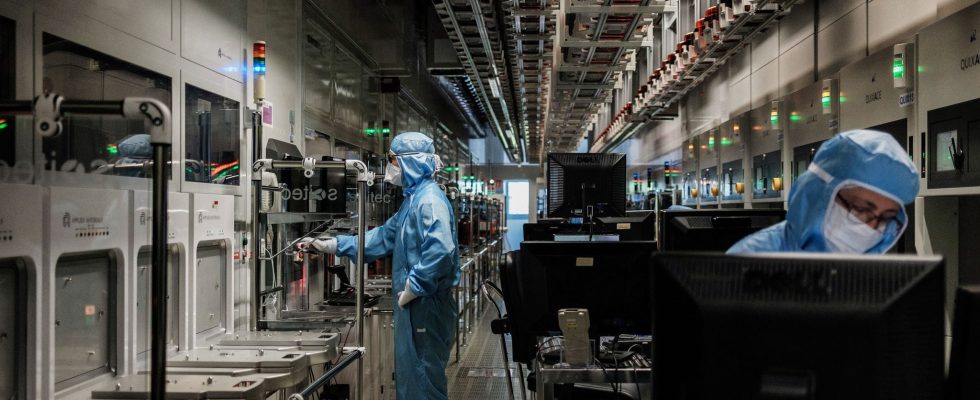A grain of dust, a bacteria or a trace of the sodium that human skin naturally secretes, and Soitec’s entire production is threatened. So, to operate in the factories, the 2,100 employees of the Isère company, including 1,600 in France, equip themselves.
Every day, they enclose their hair in a cap, contain their breath in a thick mask, cover their hands with a double layer of gloves and strap themselves into a full outfit. This is the price to pay to penetrate the heart of the Soitec reactor: its clean rooms, from which several million ultra-thin wafers of silicon on insulation emerge each year. Cutting-edge components that the semiconductor industry is chasing. Coming from CEA-Leti, Soitec did not need the executive plan intended to support SMEs and mid-sized companies in exporting to deliver its ranges of substrates to the four corners of the world.
More than 90% of sales international
Thanks to its seven factories – four of which are located in the suburbs of Grenoble and provide two-thirds of the volumes – this manufacturer generates more than 90% of its turnover internationally. Unsurprisingly, two-thirds of its revenues are generated in Asia. This is where most of the key players in the semiconductor industry are concentrated, from Taiwan to South Korea via Japan and China and their national champions: TSMC, Samsung, Renesas and even Smic… Europe and the United States absorb the rest of Soitec’s production. An export role that the company cultivates. Since its birth in 1992, it has made the international market a lever for growth, ensuring its current management with a certain fair play.
The efforts made in terms of innovation are also not unrelated to the interest shown in its solutions. “11% of our turnover is devoted to research and development. In 2022, we have filed 400 new patents,” recalls Pierre Barnabé, a former Atos manager who was appointed head of Soitec in the summer of 2022. In doing so, the company hopes to conquer another market, beyond mobile communications: automobiles. To achieve this, it says it has developed a solution that emits less CO2 in its production, and is capable of improving the performance of electric cars that would be equipped with it.
A win-win, in short. Soitec still needs to convince car manufacturers to adopt it. For the moment, the ETI does not yet seem to have converted any prospects into customers. In public, however, trust reigns. “By 2030, our SmartSiC solution will represent 30% of the silicon carbide market, which itself will occupy 70% of the electric car market,” insists its management. A challenge to take up at a time when the fall in smartphone sales, by far still its biggest outlet, weighs heavily on the accounts of the Isère company. And with the memory, still vivid, of the failed diversification into solar energy which almost cost him his skin. But Soitec believes in its ability to win its return match in the automobile industry.
